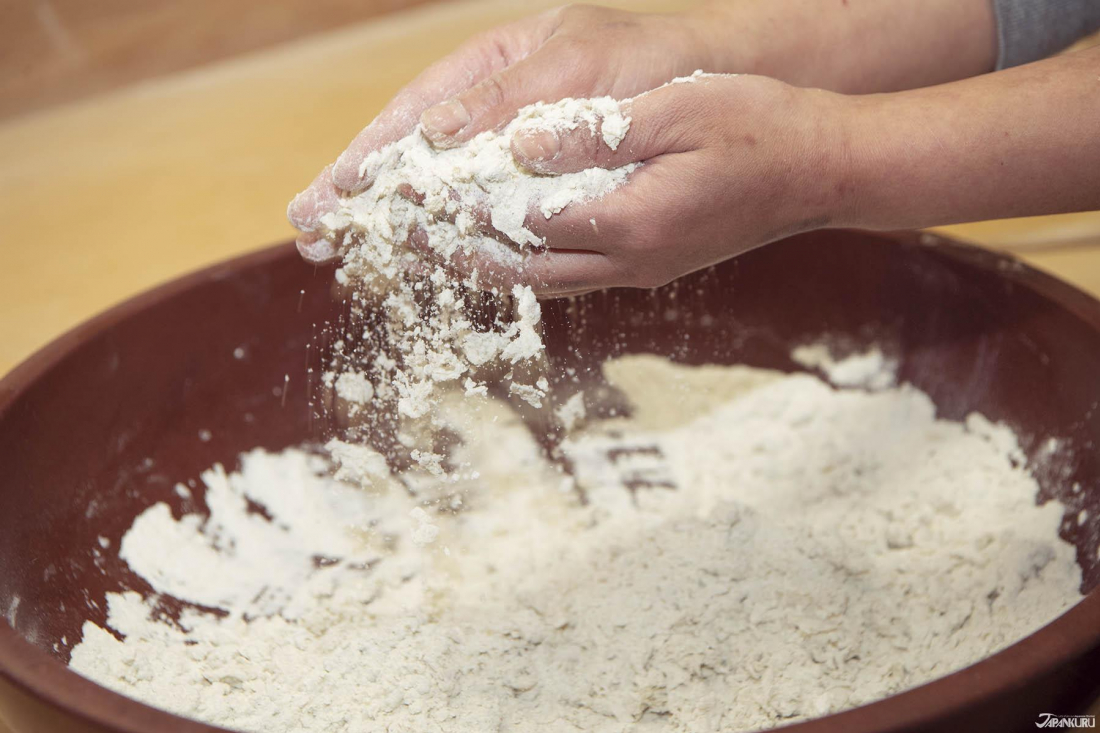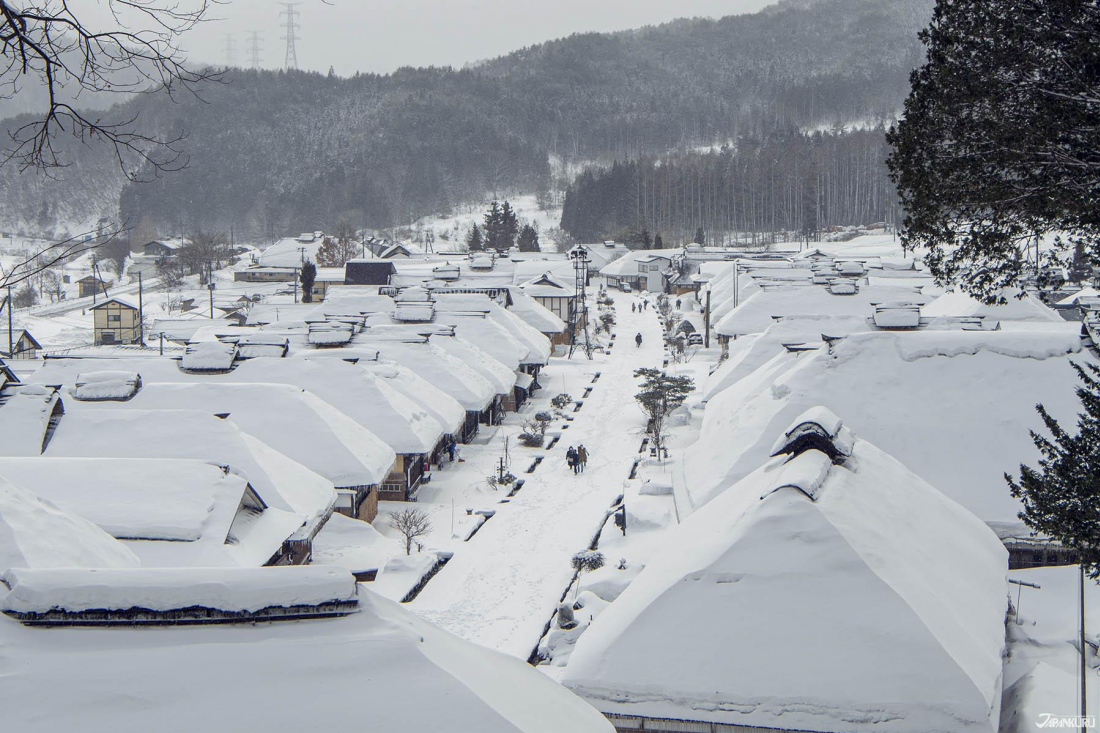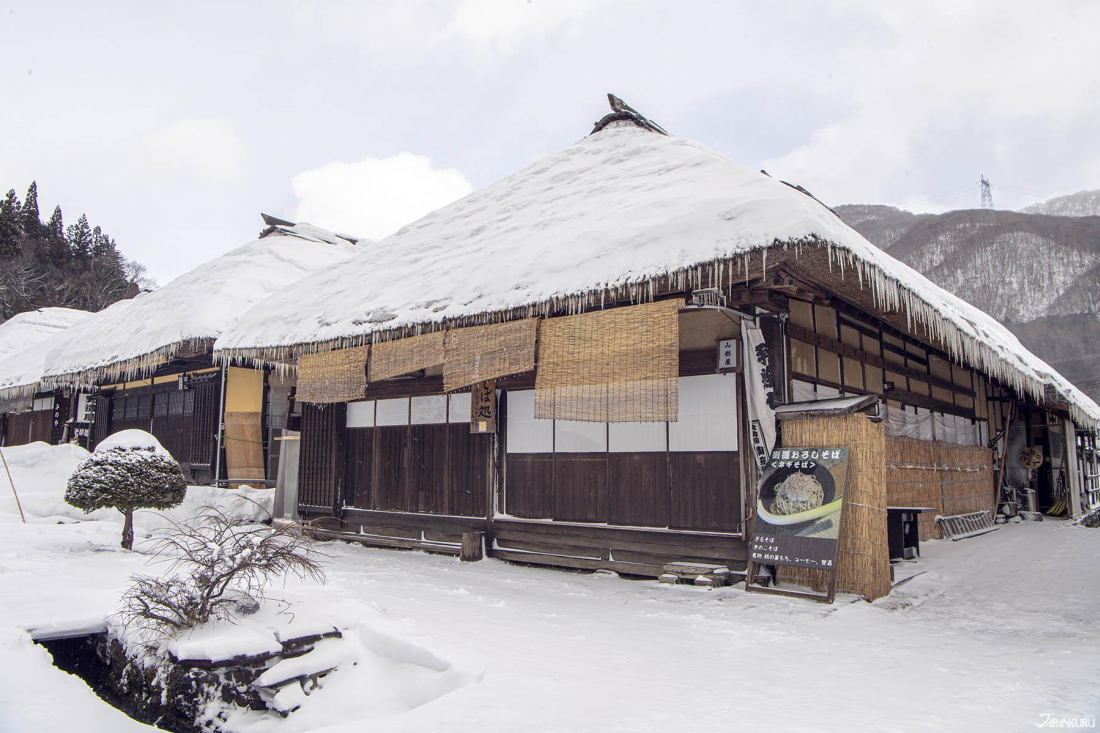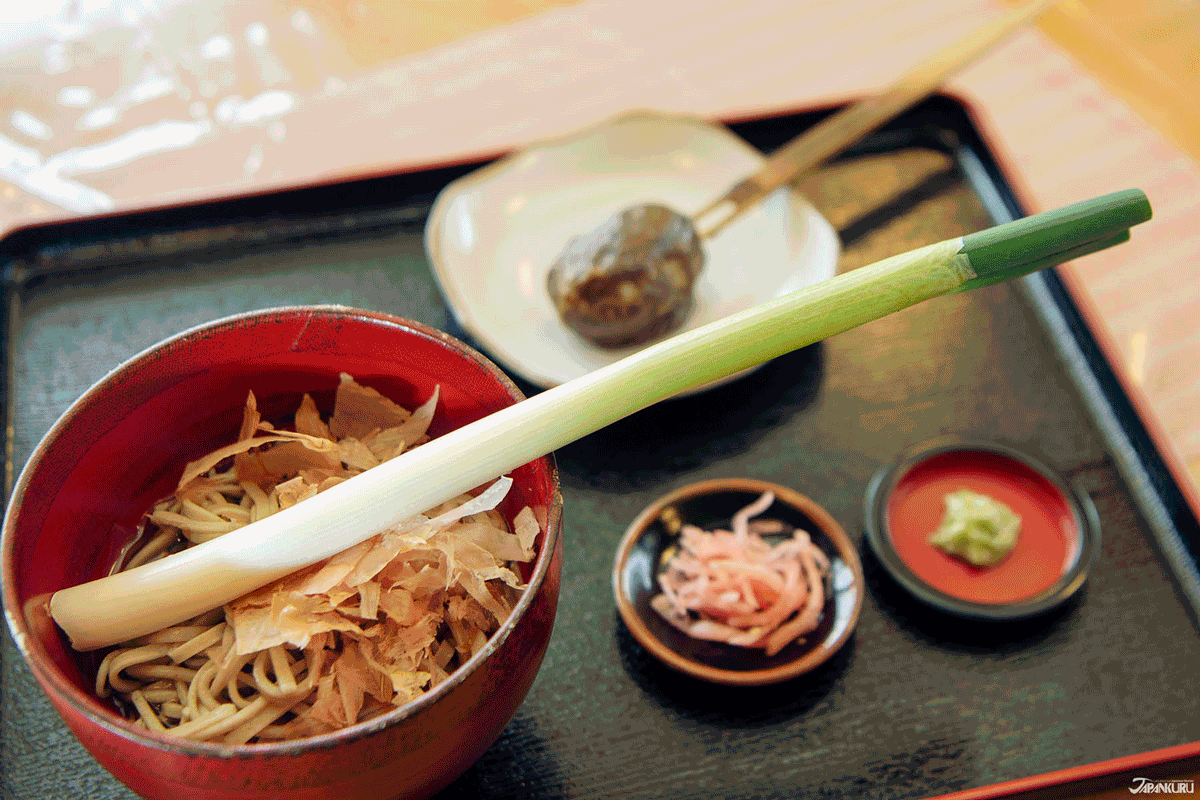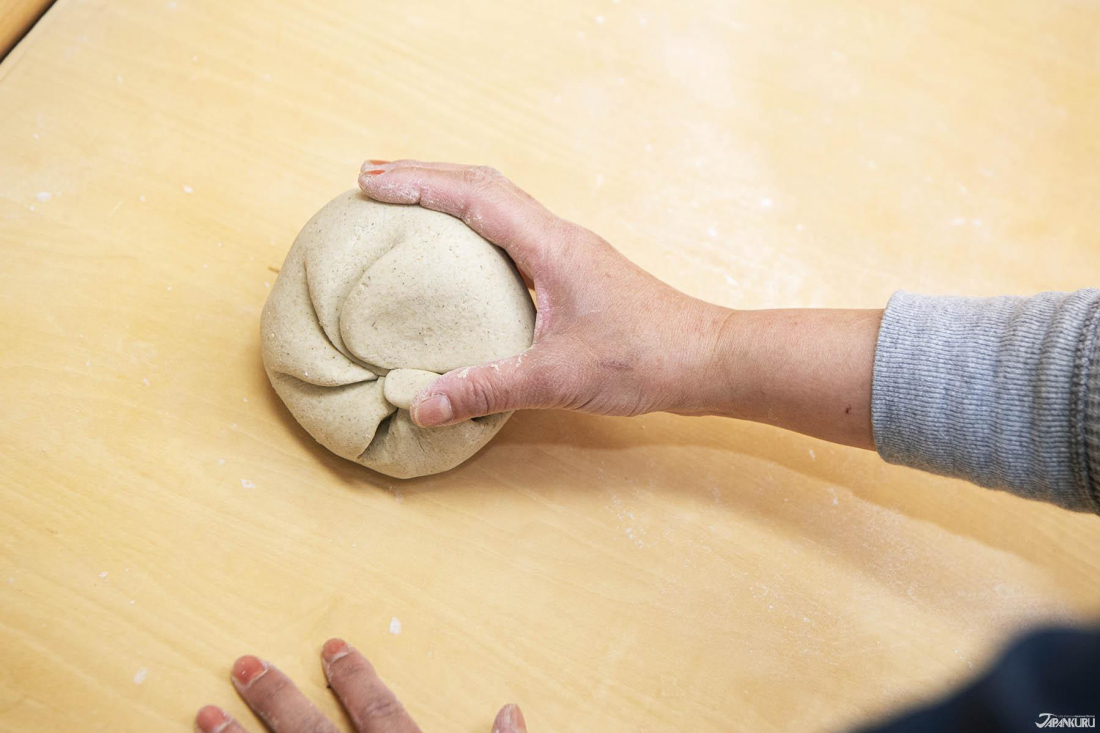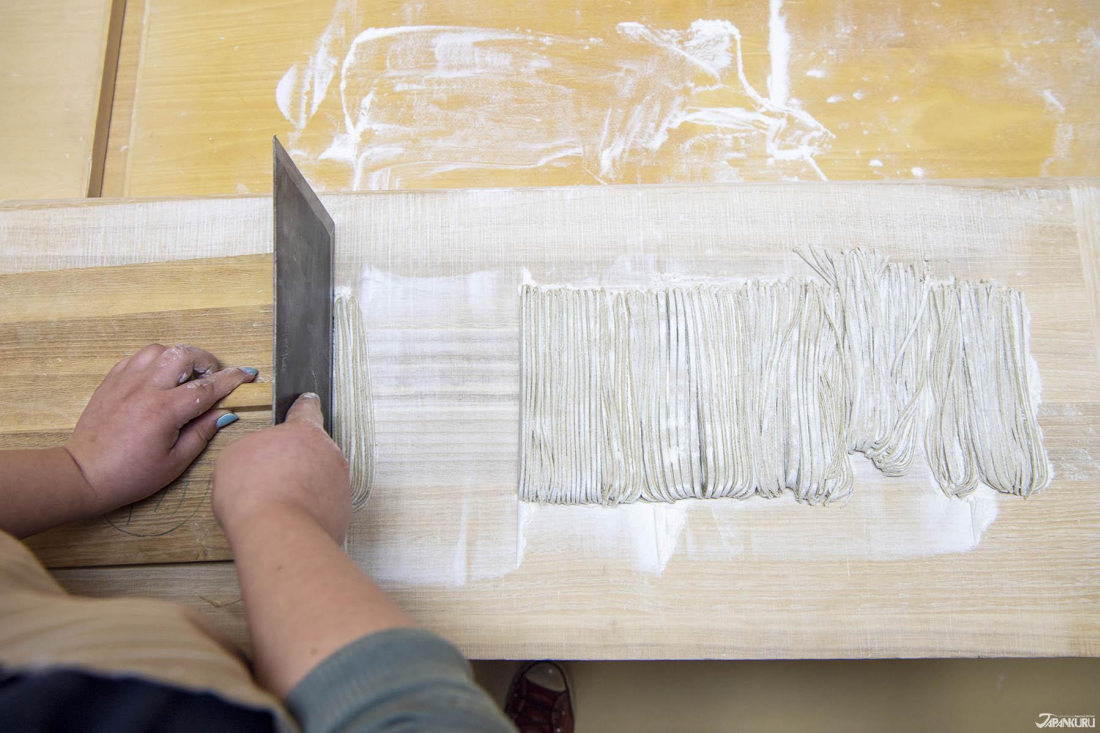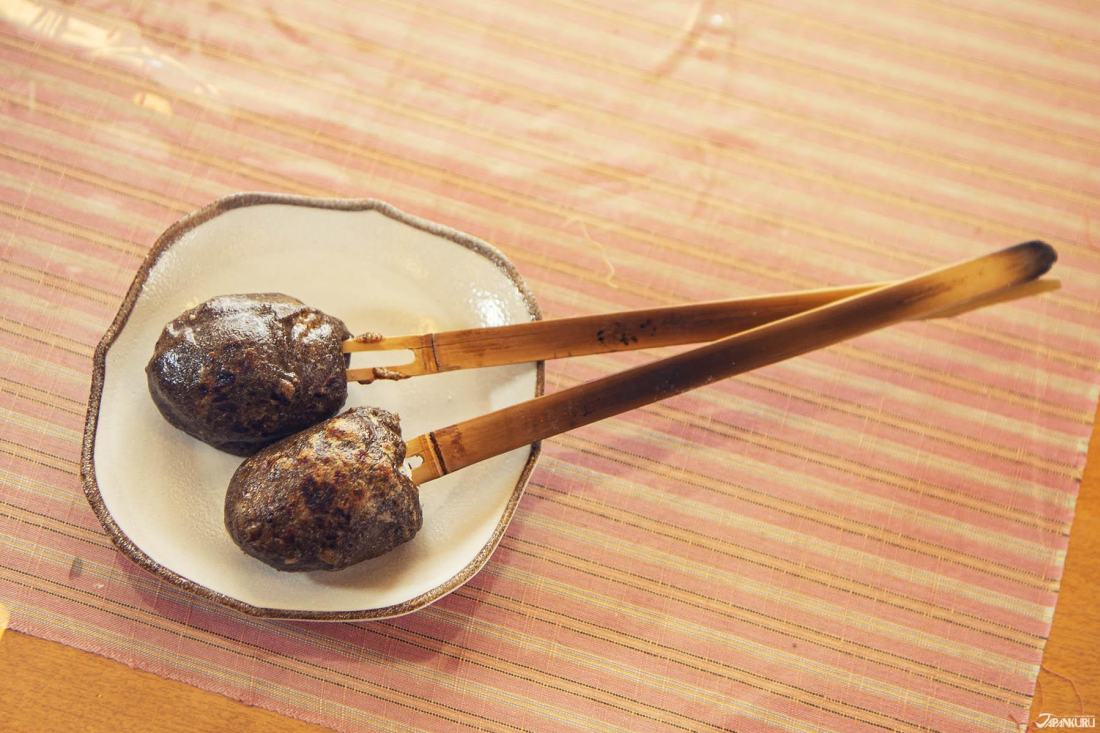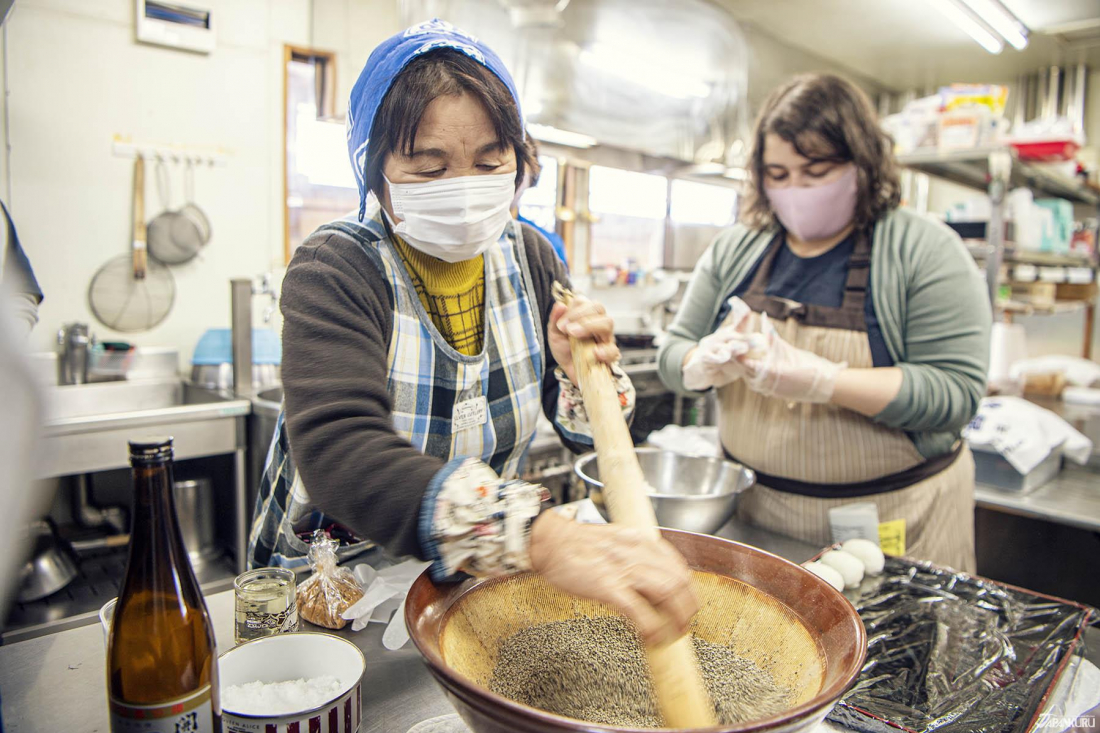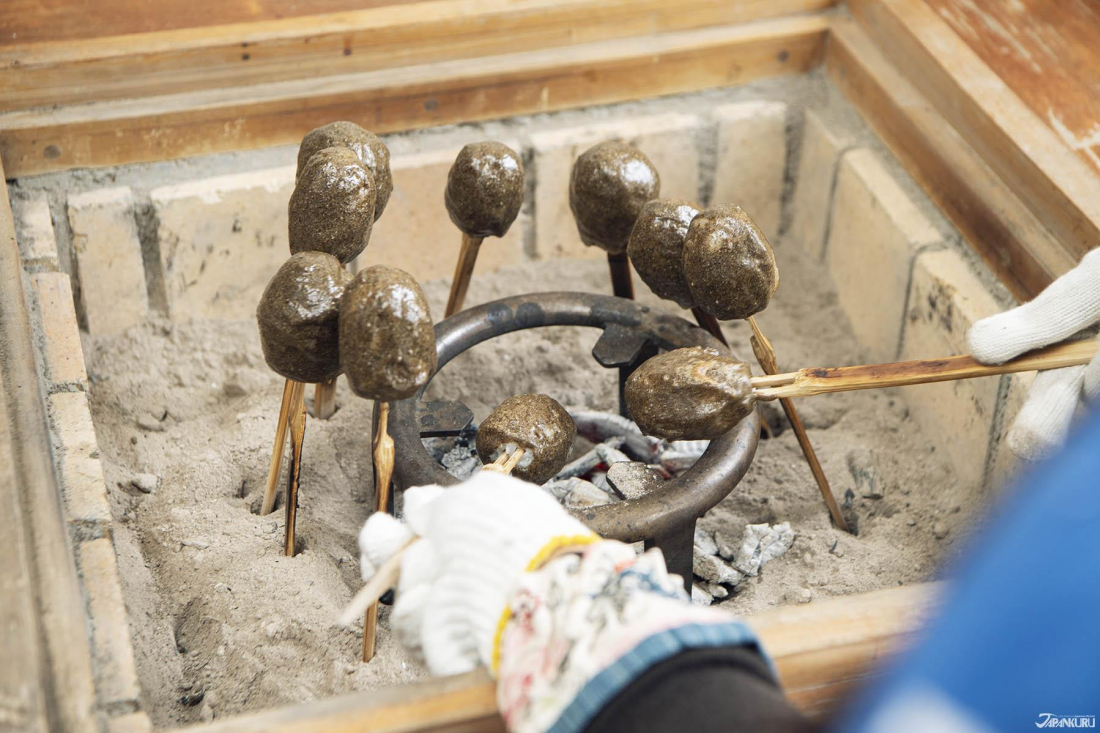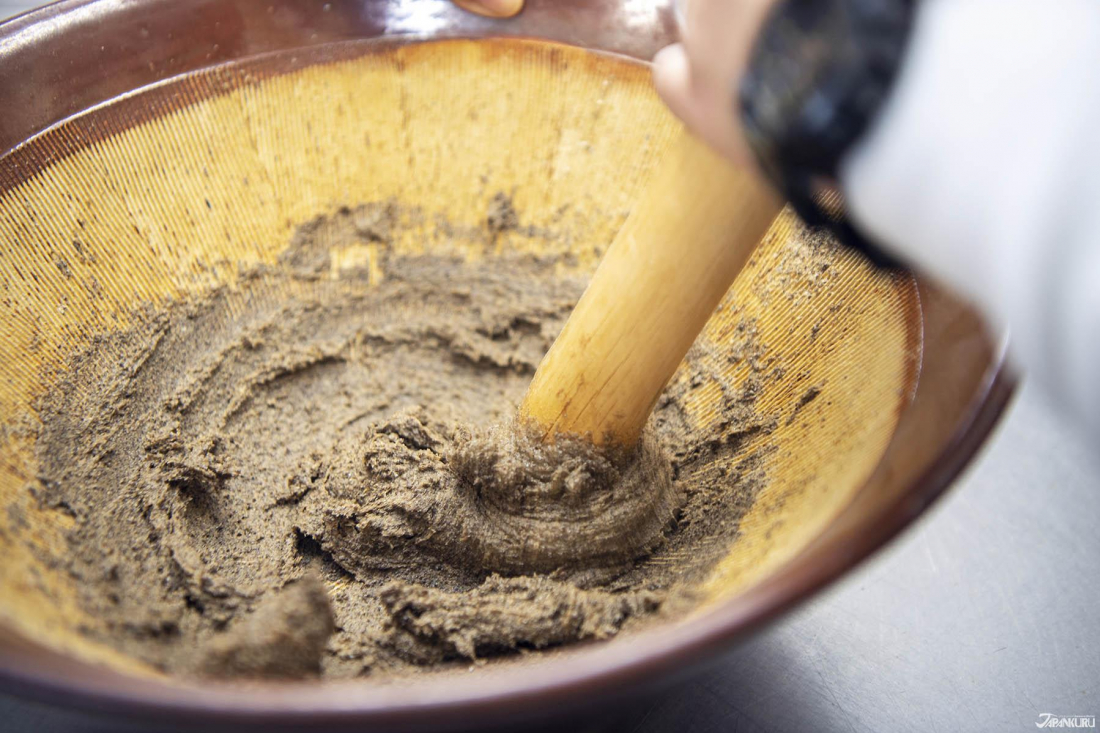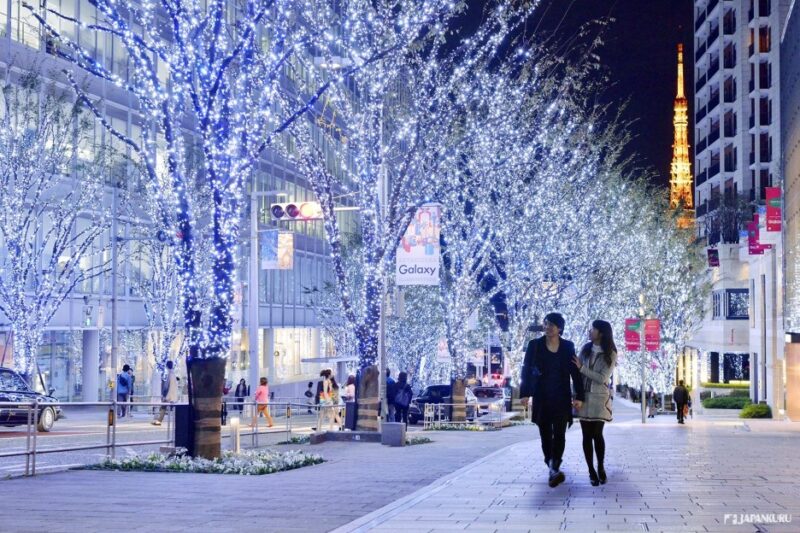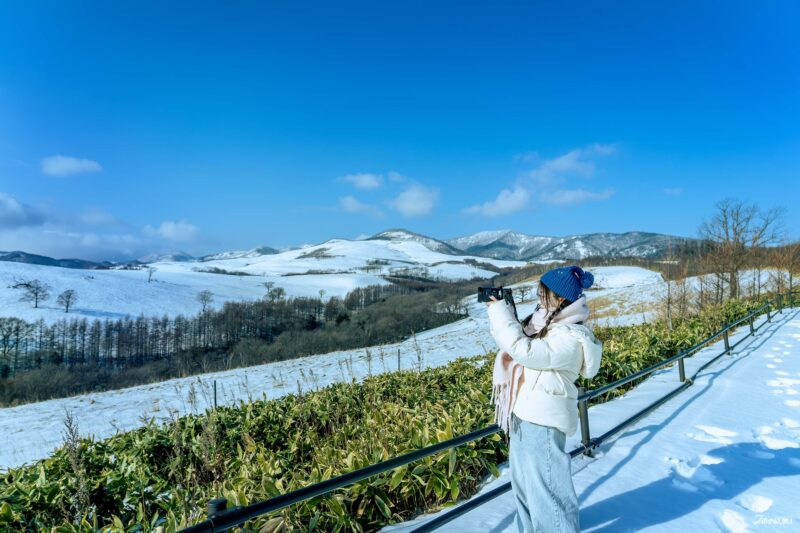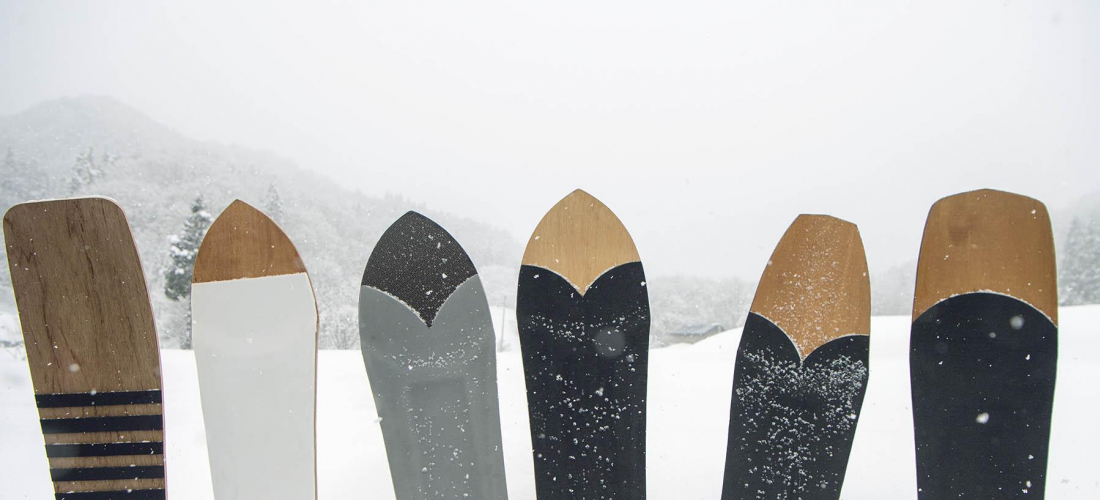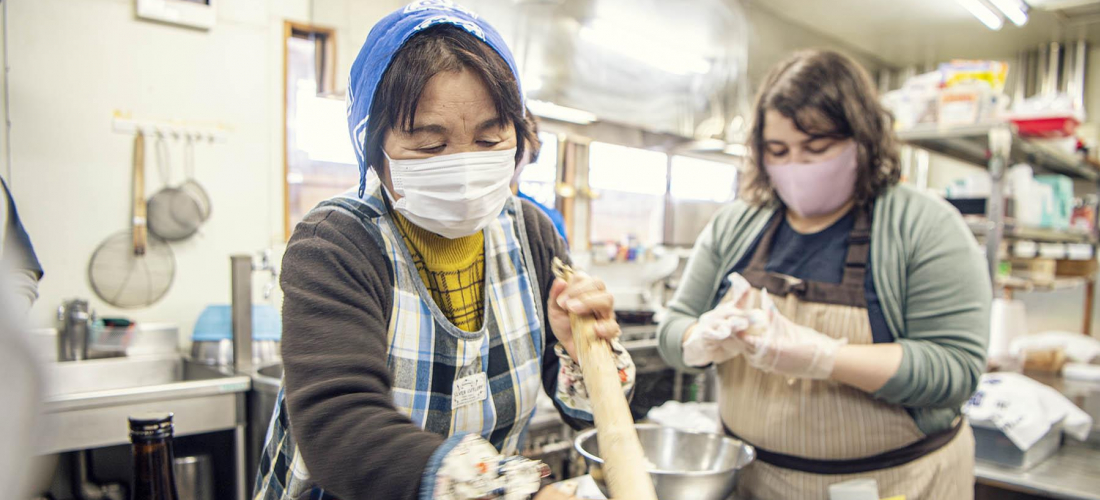
CONTENTS
Shimogo’s traditional village of Ouchijuku is famous for thatched roofs and some unique foods, so why not learn to cook like a local?
Traditional Villages and Traditional Cooking in Shimogo
In Japan, the Aizu area of Fukushima is known for its history of samurai and feudal traditions of the Edo era, preserved through castles and villages still standing to this day, but also for its verdant summer fields and abundant agricultural successes. It's no surprise that the area is known for flavorful food and excellent sake brewing. So the Japankuru team recently returned to the Aizu region for a trip through three areasーAizuwakamatsu, Shimogo, and Minamiaizuーto soak up the culture, learn more about local cuisine, and even learn how to bring some of the flavors of Aizu home with us!
Ouchijuku
Back in Japan's Edo period (1603-1868), the village of Ouchijuku was a stop along the Aizu Nishi Kaido, one road in a network of old-fashioned highways connecting the shogun to the rest of Japan. Travelers passed through as they traveled from Aizu to other parts of the nation, staying the night and bringing prosperity to the thriving little community. To this day, many of the buildings built in the Edo era are still in use, preserved for over 300 years and still complete with traditional thatched roofs.
Throughout the seasons, travelers come to admire the traditional buildings and the atmosphere that still feels like another place in time, where a samurai or a kimono-clad family might step out around a corner at any moment. It's no museum, though! The buildings still contain homes, accommodations, and businesses, including quite a few restaurants specializing in soba noodles.
Ouchijuku (大内宿)
Ouchi, Shimogo, Minamiaizu District, Fukushima
Official Website (jp)
Local Shimogo Cuisine Cooking Classes
Thanks to vast fields of buckwheat that flourish throughout the southern part of the Aizu region, soba noodles (蕎麦, literally buckwheat) are a part of the local food culture in Aizu. And in Shimogo, the town that Ouchijuku is now a part of in present-day Fukushima, the soba is extra special. Here, they eat "negi-soba" (ネギ蕎麦), which is a dish of soba noodles picked up and eaten with one long green onion, in place of chopsticks. This unusual method requires a little bit of skill and a lot of commitment, but the green onion adds extra flavor, and you can even chomp down on it along with the noodles (although you aren't required to eat the whole thing)!
One of the best parts of the negi-soba, though, is that you can make it yourself in Ouchijuku!
In Shimogo, travelers can take cooking classes at the Ouchijuku Shoku-no-Yakata, taught by local chefsーthe kind of people who you can tell with one look are passing down generations of local cooking knowledge and expertise! These expert chefs help you cook up an authentic meal in the middle of Shimogo, starting from scratch with a bowl of buckwheat flour, and slowly kneading it into a smooth dough ready to be rolled out.
You can even customize the dish to your liking! Soba noodles vary in width from place to place, and when you're cutting the noodles yourself, you get to decide on the perfect size! After the noodles are all prepared, they're taken to the stove to be boiled up and added to a savory broth, for an authentic Ouchijuku dish you made yourself! And the bowl is served with one big old green onion, of course.
But soba noodles aren't the only local recipe you can learn to make in Shimogo…
Shingoro (しんごろう) are even more of a local Shimogo specialtyーyou probably won't find this particular dish anywhere else, although you might find foods with some resemblance, like gohei-mochi in Aichi. Legend says that shingoro were originally created by a poor local farmer with a pure heart, who couldn't afford to pay for an offering to the gods, and cooked up a new recipe to offer instead. With centers made of white rice and fragrant outer shells of wild sesame miso, all roasted over hot coals, shingoro are a unique taste experience, for the gods of Japan and common folk alike. And you can make them yourself along with your negi-soba!
The recipe for shingoro is actually a bit more challenging than soba noodles, but that just gives you ample time to learn from the chefs and hear all about the local culture! After you make rice balls out of slightly mushed rice, the most important step in making shingoro is whipping up the wild sesame miso, and that takes a bit of time and effort. Wild sesame is a native plant generally called egoma (エゴマ) in Japan, but in Shimogo they call it junen (じゅうねん), which literally means "ten years." They say that eating just one little grain of this precious ingredient will add ten years to your life, so imagine how our lifespans must have grown after we ground up thousands of little wild sesame seeds in a huge mortar and pestle!
After you and everyone participating has taken turns grinding the wild sesame as much as your arms can bear, it's finally time to add umami-rich miso, a bit of sugar, and a dash of local Aizu sake to turn it into a sauce, painted thickly onto the rice balls.
Participants wedge the skewered shingoro into the ashes to roast above hot coals in a traditional Japanese hearth, until the wild sesame miso starts to brown and toast up, and they're finally ready to eat. The end result is like nothing else, with a smooth layer of unbelievably rich, sweet and savory paste giving way to a dense, textured center of simple white rice. If you want a taste of Shimogo, this is it!
Negi-Soba & Shingoro Cooking Classes at Ouchijuku Shoku-no-Yakata (大内宿 食の館)
Kusurimizu-1053 Ouchi, Shimogo, Minamiaizu District, Fukushima
Open April to November
Tel: 0241-68-2800
Shimogo
For a taste of small-town life in Japan, Shimogo offers a look at how traditions have held on throughout the area’s history, and a chance to experience the local food culture for yourself! Don’t miss out on the mellow flavors of handmade soba noodles, the delicious burn of that big green onion, or the rich depth of flavor in “junen” miso. To read more on Japankuru’s trip through Aizu, check out our visit to Aizuwakamatsu, and keep an eye out for our stories from Minamiaizu, coming next!
For more info and updates from Japan, check Japankuru for new articles, and don't forget to follow us on twitter, instagram, and facebook!
▶︎ Interested in making a reservation for one of these experiences? Look for them coming soon on Beauty of Japan.
Details
NAME:Shimogo, Aizu Region, Fukushima
ACCESS:Yunokamionsen Station
COMMENT
FEATURED MEDIA
VIEW MORE 
A New Tokyo Animal Destination: Relax & Learn About the World’s Animals in Japan
#pr #japankuru #anitouch #anitouchtokyodome #capybara #capybaracafe #animalcafe #tokyotrip #japantrip #카피바라 #애니터치 #아이와가볼만한곳 #도쿄여행 #가족여행 #東京旅遊 #東京親子景點 #日本動物互動體驗 #水豚泡澡 #東京巨蛋城 #เที่ยวญี่ปุ่น2025 #ที่เที่ยวครอบครัว #สวนสัตว์ในร่ม #TokyoDomeCity #anitouchtokyodome

Shohei Ohtani Collab Developed Products & Other Japanese Drugstore Recommendations From Kowa
#pr #japankuru
#kowa #syncronkowa #japanshopping #preworkout #postworkout #tokyoshopping #japantrip #일본쇼핑 #일본이온음료 #오타니 #오타니쇼헤이 #코와 #興和 #日本必買 #日本旅遊 #運動補充能量 #運動飲品 #ช้อปปิ้งญี่ปุ่น #เครื่องดื่มออกกำลังกาย #นักกีฬา #ผลิตภัณฑ์ญี่ปุ่น #อาหารเสริมญี่ปุ่น

도쿄 근교 당일치기 여행 추천! 작은 에도라 불리는 ‘가와고에’
세이부 ‘가와고에 패스(디지털)’ 하나면 편리하게 이동 + 가성비까지 완벽하게! 필름카메라 감성 가득한 레트로 거리 길거리 먹방부터 귀여움 끝판왕 핫플&포토 스폿까지 총집합!
Looking for day trips from Tokyo? Try Kawagoe, AKA Little Edo!
Use the SEIBU KAWAGOE PASS (Digital) for easy, affordable transportation!
Check out the historic streets of Kawagoe for some great street food and plenty of picturesque retro photo ops.
#pr #japankuru #도쿄근교여행 #가와고에 #가와고에패스 #세이부패스 #기모노체험 #가와고에여행 #도쿄여행코스 #도쿄근교당일치기 #세이부가와고에패스
#tokyotrip #kawagoe #tokyodaytrip #seibukawagoepass #kimono #japantrip

Hirakata Park, Osaka: Enjoy the Classic Japanese Theme Park Experience!
#pr #japankuru #hirakatapark #amusementpark #japantrip #osakatrip #familytrip #rollercoaster #retrôvibes #枚方公園 #大阪旅遊 #關西私房景點 #日本親子旅行 #日本遊樂園 #木造雲霄飛車 #히라카타파크 #สวนสนุกฮิราคาตะพาร์ค

🍵Love Matcha? Upgrade Your Matcha Experience With Tsujiri!
・160년 전통 일본 말차 브랜드 츠지리에서 말차 덕후들이 픽한 인기템만 골라봤어요
・抹茶控的天堂!甜點、餅乾、飲品一次滿足,連伴手禮都幫你列好清單了
・ส่องมัทฉะสุดฮิต พร้อมพาเที่ยวร้านดังในอุจิ เกียวโต
#pr #japankuru #matcha #matchalover #uji #kyoto #japantrip #ujimatcha #matchalatte #matchasweets #tsujiri #말차 #말차덕후 #츠지리 #교토여행 #말차라떼 #辻利抹茶 #抹茶控 #日本抹茶 #宇治 #宇治抹茶 #日本伴手禮 #抹茶拿鐵 #抹茶甜點 #มัทฉะ #ของฝากญี่ปุ่น #ชาเขียวญี่ปุ่น #ซึจิริ #เกียวโต

・What Is Nenaito? And How Does This Sleep Care Supplement Work?
・你的睡眠保健品——認識「睡眠茶氨酸錠」
・수면 케어 서플리먼트 ‘네나이토’란?
・ผลิตภัณฑ์เสริมอาหารดูแลการนอน “Nenaito(ネナイト)” คืออะไร?
#pr #japankuru #sleepcare #japanshopping #nenaito #sleepsupplement #asahi #睡眠茶氨酸錠 #睡眠保健 #朝日 #l茶胺酸 #日本藥妝 #日本必買 #일본쇼핑 #수면 #건강하자 #네나이토 #일본영양제 #อาหารเสริมญี่ปุ่น #ช้อปปิ้งญี่ปุ่น #ร้านขายยาญี่ปุ่น #ดูแลตัวเองก่อนนอน #อาซาฮิ

Japanese Drugstore Must-Buys! Essential Items from Hisamitsu® Pharmaceutical
#PR #japankuru #hisamitsu #salonpas #feitas #hisamitsupharmaceutical #japanshopping #tokyoshopping #traveltips #japanhaul #japantrip #japantravel

Whether you grew up with Dragon Ball or you just fell in love with Dragon Ball DAIMA, you'll like the newest JINS collab. Shop this limited-edition Dragon Ball accessory collection to find some of the best Dragon Ball merchandise in Japan!
>> Find out more at Japankuru.com! (link in bio)
#japankuru #dragonball #dragonballdaima #animecollab #japanshopping #jins #japaneseglasses #japantravel #animemerch #pr

This month, Japankuru teamed up with @official_korekoko to invite three influencers (originally from Thailand, China, and Taiwan) on a trip to Yokohama. Check out the article (in Chinese) on Japankuru.com for all of their travel tips and photography hints - and look forward to more cool collaborations coming soon!
【橫濱夜散策 x 教你怎麼拍出網美照 📸✨】
每次來日本玩,是不是都會先找旅日網紅的推薦清單?
這次,我們邀請擁有日本豐富旅遊經驗的🇹🇭泰國、🇨🇳中國、🇹🇼台灣網紅,帶你走進夜晚的橫濱!從玩樂路線到拍照技巧,教你怎麼拍出最美的夜景照。那些熟悉的景點,換個視角說不定會有新發現~快跟他們一起出發吧!
#japankuru #橫濱紅磚倉庫 #汽車道 #中華街 #yokohama #japankuru #橫濱紅磚倉庫 #汽車道 #中華街 #yokohama #yokohamaredbrickwarehouse #yokohamachinatown

If you’re a fan of Vivienne Westwood's Japanese designs, and you’re looking forward to shopping in Harajuku this summer, we’ve got important news for you. Vivienne Westwood RED LABEL Laforet Harajuku is now closed for renovations - but the grand reopening is scheduled for July!
>> Find out more at Japankuru.com! (link in bio)
#japankuru #viviennewestwood #harajuku #omotesando #viviennewestwoodredlabel #viviennewestwoodjapan #비비안웨스트우드 #오모테산도 #하라주쿠 #日本購物 #薇薇安魏斯伍德 #日本時尚 #原宿 #表參道 #japantrip #japanshopping #pr

Ready to see TeamLab in Kyoto!? At TeamLab Biovortex Kyoto, the collective is taking their acclaimed immersive art and bringing it to Japan's ancient capital. We can't wait to see it for ourselves this autumn!
>> Find out more at Japankuru.com! (link in bio)
#japankuru #teamlab #teamlabbiovortex #kyoto #kyototrip #japantravel #artnews
Photos courtesy of teamLab, Exhibition view of teamLab Biovortex Kyoto, 2025, Kyoto ® teamLab, courtesy Pace Gallery

Japanese Makeup Shopping • A Trip to Kamakura & Enoshima With Canmake’s Cool-Toned Summer Makeup
#pr #canmake #enoshima #enoden #에노시마 #캔메이크 #japanesemakeup #japanesecosmetics

⚔️The Robot Restaurant is gone, but the Samurai Restaurant is here to take its place. Check it out, and don't forget your coupon!
🍣신주쿠의 명소 로봇 레스토랑이 사무라이 레스토랑으로 부활! 절찬 쿠폰 발급중
💃18歲以上才能入場的歌舞秀,和你想的不一樣!拿好優惠券去看看~
#tokyo #shinjuku #samurairestaurant #robotrestaurant #tokyotrip #도쿄여행 #신주쿠 #사무라이레스토랑 #이색체험 #할인이벤트 #歌舞伎町 #東京景點 #武士餐廳 #日本表演 #日本文化體驗 #japankuru #japantrip #japantravel #japanlovers #japan_of_insta

Japanese appliance & electronics shopping with our KOJIMA x BicCamera coupon!
用JAPANKURU的KOJIMA x BicCamera優惠券買這些正好❤️
코지마 x 빅 카메라 쿠폰으로 일본 가전 제품 쇼핑하기
#pr #japankuru #japanshopping #kojima #biccamera #japaneseskincare #yaman #dji #osmopocket3 #skincaredevice #日本購物 #美容儀 #相機 #雅萌 #日本家電 #일본여행 #면세 #여행꿀팁 #일본쇼핑리스트 #쿠폰 #일본쇼핑 #일본브랜드 #할인 #코지마 #빅카메라 #japankurucoupon

